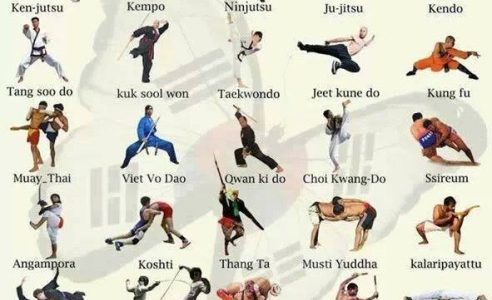The Advancement And Historical Context Of Martial Arts Worldwide
The Advancement And Historical Context Of Martial Arts Worldwide
Blog Article
Author-Wilcox Liu
Martial arts have an interesting background that covers centuries and continents. You could find it fascinating just how old methods like Shuai Jiao and Kalaripayattu laid the groundwork for modern battle strategies. These techniques not only highlight physical skills but likewise show the cultures that birthed them. As japanese martial art crossword discover their evolution, think about just how globalization has changed these standard types into hybrid styles. What impacts do you believe have formed today's martial arts landscape?
Ancient Martial arts: The Foundations of Combat
As you delve into the globe of old martial arts, you'll discover the rich structures that formed battle methods across cultures. Very early techniques focused on Self-Defense and survival, often including strikes, grappling, and weapons.
In ancient China, for instance, techniques like Shuai Jiao highlighted throws and joint locks, while India's Kalaripayattu showcased dexterity and liquid motion. Japanese samurai established Kenjutsu, a refined swordsmanship that highlighted discipline and approach.
pop over here offered not just for battle but likewise as a way of personal development, instilling values like regard and willpower. The blending of these strategies with time prepared for the diverse martial arts you see today, each mirroring the unique approaches and needs of its society.
The Social Influence on Martial Arts Growth
While martial arts often show the sensible demands of a culture, they additionally symbolize the cultural values and ideas of their beginnings. When you explore various martial arts, you'll notice exactly how they're affected by faith, philosophy, and social standards.
For example, the emphasis on respect and discipline in Japanese martial arts comes from Zen Buddhism and samurai society. In contrast, Brazilian Jiu-Jitsu advertises flexibility and approach, shaped by the requirement for performance in a diverse, modern environment.
You could locate that the rituals, attires, and training techniques mirror a neighborhood's background and identity. By recognizing these cultural influences, you strengthen your admiration of martial arts and their role fit human experiences across the globe.
Modern Adaptations and the Globalization of Martial arts
Martial arts have transformed substantially in current decades, adapting to contemporary society and international impacts. You'll notice that traditional kinds have blended with contemporary techniques, creating hybrid styles like MMA. These adaptations cater to diverse audiences, making martial arts available and appealing globally.
With the increase of social networks and digital systems, you can find tutorials and competitions from all corners of the world, damaging geographical obstacles. This globalization has brought about a shared recognition for numerous techniques, from Brazilian Jiu-Jitsu to Taekwondo.
As you involve with these arts, you'll understand they're not nearly battle; they advertise fitness, self-control, and psychological well-being.
Eventually, modern adaptations have enriched the martial arts landscape, making it a dynamic and evolving technique.
Conclusion
In checking out the background and development of martial arts, you discover an interesting blend of techniques, cultures, and approaches. From old disciplines like Shuai Jiao and Kalaripayattu to the contemporary adaptability seen in MMA, martial arts mirror humanity's mission for Self-Defense and personal growth. As you involve with these practices, you not just obtain skills but also a deeper gratitude for the varied practices that shape our globe today. So, continue your journey and embrace the art of battle!
